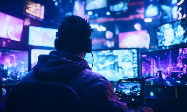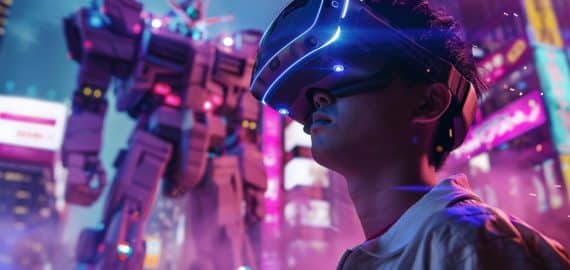Reimagining Play with Web3: A Novel Gaming Era
The way we engage with digital surroundings, especially the gaming industry, is expected to change with this blockchain-based basis for the internet of the future. Leading this are Web3 games. They provide fresh opportunities for user interaction, ownership, and financial involvement.
The Web3 Generation’s Development of Gaming
Web3 gaming differs from conventional gaming concepts. Web3 games generate distinctive gaming experiences using decentralized networks and NFTs, in contrast to centralized systems where game producers have complete control. These games frequently include features that radically change the interaction between players, developers, and in-game assets, such as smart contracts, cryptocurrency wallets, and DAOs.
The idea of actual digital ownership is among Web3 games’ most distinctive characteristics. Players may own, trade, and occasionally even manufacture in-game assets like NFTs thanks to blockchain technology. This ownership may enable compatibility between various gaming ecosystems as it goes beyond the boundaries of a particular game.
The gaming industry has also seen the introduction of new economic models with the growth of Web3 play-to-earn games. These Web3 games conflate economic action with leisure by allowing players to earn crypto or other digital assets through gameplay. Even while the early excitement surrounding play-to-earn Web3 models has subsided, the idea is still developing and finding a home in the larger gaming industry.
Opportunities and Difficulties for Web3 Gaming
Web3 gaming has potential, but there are a number of obstacles in the way. Many early Web3 games had trouble taking off because they lacked engaging gameplay, had a subpar user interface, and placed too much focus on financial rewards at the expense of entertainment value. Several prospective participants find it difficult to get started due to the intricacy of blockchain technology and the requirement for understanding cryptocurrencies.
Another obstacle is the technical limits. Because of latency and other gameplay problems caused by scalability and network performance limitations, Web3 games are less competitive than traditional gaming experiences. Another major worry is security, as there’s a chance that hackers and vulnerabilities might cost players a lot of money.
Yet, there are also chances for creativity because of these difficulties. We should anticipate seeing more complex and captivating Web3 game appear as the technology advances and developers get expertise. Web3 gaming systems may experience previously unheard-of levels of immersion and engagement as a result of the combination of AI, VR, and machine learning.
Using DAOs to create player-driven games is an intriguing possibility as well. Web3 games have the potential to create more responsive game design and highly engaged communities by letting players vote on modifications and actively contribute to the game’s content.
The Web3 Gaming Market in the Years Ahead
Looking ahead, Web3 may have a revolutionary effect on gaming. Web3 game blockchain foundation creates new opportunities for visual quality, player interaction, and in-game economy. Integrating virtual reality might result in enormous, immersive game environments with hitherto unheard-of graphic resolution.
It may eventually be possible for games to communicate with one another, enabling users to move characters and other game elements between various gaming environments. This may result in the development of large-scale metaverse-like settings where users’ digital assets and identities are preserved across many games and platforms.
It’s conceivable that Web3 gaming’s financial components may change as well. Even if the initial Web3 play-to-earn games development encountered difficulties, more advanced economic structures could develop. These might establish long-lasting gaming ecosystems that benefit both players and developers.
Although Web3 game production is still in its infancy, it has the power to completely alter the gaming landscape. Expect to see more engaging Web3 play as creators improve their methods and overcome technological obstacles to create games that provide distinctive experiences and chances for player interaction.
To sum up, Web3 is redefining play by bringing in fresh perspectives on player agency, ownership, and economic involvement. Web3 gaming has a lot of room for creativity, even with the remaining obstacles. Web3 gaming is still in its infancy, but supporters and developers alike should expect an enjoyable ride down this intriguing path.
Disclaimer
In line with the Trust Project guidelines, please note that the information provided on this page is not intended to be and should not be interpreted as legal, tax, investment, financial, or any other form of advice. It is important to only invest what you can afford to lose and to seek independent financial advice if you have any doubts. For further information, we suggest referring to the terms and conditions as well as the help and support pages provided by the issuer or advertiser. MetaversePost is committed to accurate, unbiased reporting, but market conditions are subject to change without notice.
About The Author
He's a seasoned writer known for crafting compelling narratives that engage audiences and drive brand growth. With a keen eye for detail and a passion for storytelling, Kenth excels at turning complex ideas into eye-catching marketing messages.
More articlesHe's a seasoned writer known for crafting compelling narratives that engage audiences and drive brand growth. With a keen eye for detail and a passion for storytelling, Kenth excels at turning complex ideas into eye-catching marketing messages.

















































